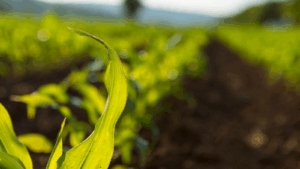Should We Wait for a Global Soil Carbon Regulatory Policy?
Farmers are looking beyond conventional production of crops and animals and exploring the option of capitalizing on carbon markets. Carbon farming via soil carbon sequestration offers these farmers a chance to generate an additional source of revenue from carbon credits while simultaneously boosting soil fertility.
Measurement, reporting, and verification (MRV) technology is key to enabling access to carbon markets for farmers and agrifood companies. How? By ensuring that carbon farming practices achieve verifiable results. However, no global standardized framework for measuring exists today.
While the global regulatory infrastructure around soil carbon develops at a glacial pace, several countries have begun to craft their own policies to encourage innovation in this space and meet climate targets. Some of these are directed towards implementing state-regulated compliance carbon markets (CCMs) while others are aimed at helping farmers access voluntary carbon markets (VCMs) developed in the private sector.
Australia’s Lead in Soil Carbon MRV
Ahead of the curve, Australia developed its first soil carbon measurement methodology as early as 2014 to pay farmers for behavior changes. Given its landmass and significant agricultural sector, it is well-known that carbon farming has become one of the primary objectives of the government’s Technology Investment Roadmap, which is a critical feature of the country’s long-term emissions reduction plan.
The Australian Carbon Farming Initiative and Emissions Reduction Fund include guidance relating to sampling and measurement of sequestered carbon and estimating and reporting of soil organic carbon (SOC) stock changes for SOC management projects. This resulted in the birth of the Full Carbon Accounting Model (FullCAM). Moreover, project developers can participate in the country’s CCM to generate Australian Carbon Credit Units (ACCUs).
As of February 2023, there are over 400 soil carbon projects registered in Australia. The Australian National Soil Carbon Innovation Challenge gave research and commercialization organizations up to $20M to develop lower-cost, accurate technological solutions for measuring soil organic carbon stocks.
The United States Demonstrates with Cover Cropping
In the U.S., President Biden has promoted carbon farming as a crucial facet of climate mitigation, arguing in his first address to Congress in April 2021 that farmers should be compensated for cover cropping – one agricultural method that can avoid carbon emissions and contribute to soil carbon sequestration, according to S&P.
The U.S. Department of Agriculture (USDA) invested $10M in a project to sample, measure, and monitor soil carbon using the COMET-Farm and COMET-Planner tools in October 2021. This MRV technology allows producers to assess potential carbon sequestration and greenhouse gas emission reductions based on specific management scenarios.
Additionally, the Senate overwhelmingly passed the Growing Climate Solutions Act in June 2021, making it easier for farmers to participate in VCMs. The bill, however, languished in the House of Representatives until it was included in the omnibus spending bill passed this past December. The policy is intended to lower entry barriers to the VCM by establishing a USDA certification program for third-party verifiers and providing technical assistance in the generation and sale of carbon credits.
European Union Investment Lagging
As part of the European Green Deal, the European Commission adopted a proposal for a first EU-wide voluntary framework to reliably certify high-quality carbon removals this past November. The draft regulatory framework for quantifying carbon removals includes soil carbon sequestration, which is classified as a ‘nature-based solution’. The proposal establishes rules for MRV tech providers that specialize in the independent verification of carbon removals, as well as rules to recognize certification schemes that can be used to demonstrate compliance with the EU framework.
Calls for action in the regulatory sphere have been ongoing for years as investment in the EU for innovators has been lagging. From the Baltics to southern France, the EU has made great strides in R&D on soil health and carbon sequestration. Nevertheless, innovators need a clear policy framework to scale, and investors have been waiting for regulatory signals for confidence to invest. For a more in-depth analysis, check out Cleantech for Europe’s Soil Carbon Factsheet.
Carbon Sequestration Potential in Brazil
Although the late Bolsonaro administration displayed little interest in establishing a regulatory framework until its last months in power, Brazil deserves a special mention given the amount of innovation and potential for soil carbon sequestration in the country, plus, there is hope with the more climate-friendly Lula government retaking control.
In the meantime, innovators like Agrorobótica – which has built a device the size of an office printer to measure carbon in the soil – have been paving the way; as have corporates like Bayer, which invested $5.76M in a three-year program to sequester carbon in 60,000 hectares of soy and corn in 2020.
Lastly, it should not be forgotten that, according to McKinsey, Brazil has the greatest potential worldwide (15%) to remove carbon from the atmosphere through nature-based solutions. Brazil emits approximately 2.2 gigatons of carbon per year, a quarter of which comes directly from agriculture. Improved soil carbon capture along with the restoration and preservation of Amazonian biomes have a potential market of $35B by 2040. MRV technology will have a vital role to play in its success.
Looking Ahead
All hope is not lost for a global regulatory policy. In the latest sign of movement, the 2022 Global Forum for Food & Agriculture final communiqué includes commitments from 68 countries and 11 international organizations to “maintain or raise the content of soil organic carbon by, inter alia, encouraging agricultural practices that bind carbon and improve soil health.” Looking toward the future, we should expect investor confidence in soil carbon MRV innovation to skyrocket if an internationally accepted standard materializes.



